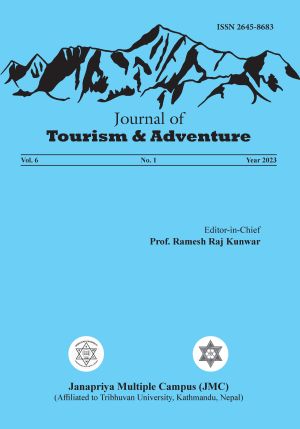Conservation Finance of Annapurna Conservation Area during COVID-19 Pandemic
DOI:
https://doi.org/10.3126/jota.v6i1.58583Keywords:
Conservation, tourism, conservation finance, Rangeland, forest-based enterprisesAbstract
Annapurna Conservation Area is considered as the only self-financed protected area in Nepal. With the aim of investigating the impact caused by COVID-19 on income and expenditure of Annapurna Conservation Area and its conservation activities, the study gathered primary data by interviewing representatives from different committees related to tourism, youth, women, and local people. Similarly, audit reports from Conservation Area Management Committee offices and Annapurna Conservation Area headquarter office were taken as secondary data. The income reduced by 36 percent in the fiscal year 2076/77 as pandemic effects began and further plummeted by 96.5 percent after a complete lockdown and travel limitations in the following year. Consequently, expenses for thematic areas and budget allocation for different management committees significantly declined. As a result, the committees minimized but did not stop spending their budget on conservation initiatives. The study recommends diversifying the income sources of the conservation area through effective rangeland management, prioritization of forest-based enterprises, utilizing the available resources, and policy reform in tourism fee collection.
Downloads
Downloads
Published
How to Cite
Issue
Section
License
Authors retain the copyright of their articles.




